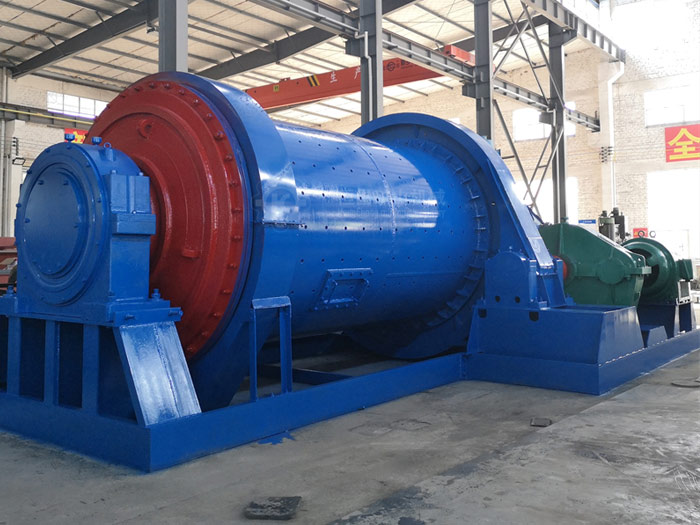Factors That Affect The Grinding Efficiency of Rod Mill
2024-12-17 09:46:01

The rod mill uses steel bars as the grinding medium, and the materials are in point contact during the grinding process. Therefore, compared with the energy-saving ball mill, the rod mill has the characteristics of uniform ore discharge, which is suitable for production lines that require more uniform particle size, such as the rod mill grinding quartz sand, sand making and other production lines.
In the actual operation process of the rod mill, there are many factors that affect the efficiency of the rod mill, and it is difficult to express clearly with a mathematical model. Cement plants generally start with the adjustment of process parameters, followed by the improvement of the parts of the rod mill to improve the output of the rod mill.
1、 Length of rod mill and bin
The partition plate in the rod mill reasonably divides the rod mill into several chambers to make the grinding body graded. A rod mill should be divided into several warehouses and a warehouse should be long, which mainly depends on the specifications of the rod mill and the fineness requirements of the product.
According to the statistics of actual production data, the percentage of each bin of the rod mill and the number of bins of the rod mill are large, so the grading and average ball diameter of the grinding body can be reasonably determined according to the material conditions of each bin. However, the effective volume of the rod mill will be reduced, the ventilation resistance will also be increased, and the output of the rod mill will be affected due to the large number of bins and the increase of partition plates. If the number of bins is small, the effective volume is high, but the grading of the grinding body cannot meet the requirements of material changes in the mill. The number of bins of the rod mill is generally determined according to the ratio of the length L and diameter of the rod mill, that is, L/D<2.0, single bin: L/D=2.0~3.0, double bin; L/D>3.0, three warehouses or four warehouses. The unreasonable proportion of the length of each bin will lead to the imbalance of the rough grinding and fine grinding capacity, and the phenomenon that the product fineness is too coarse or too fine.
2. Particle size of materials to be grinded
The particle size of the feed material is the main factor affecting the output of the rod mill. If the particle size is relatively large, more large balls must be added in one bin to break the material, which to a certain extent will increase the crushing effect, resulting in extremely unreasonable grinding process. At present, the effective utilization rate of electric energy of the crusher is about 30%, while that of the rod mill is only about 3%. Therefore, the larger the particle size, the lower the output of the rod mill, and the greater the electric energy consumption. In order to save power consumption and improve the output of the rod mill, the material shall be crushed to a particle size below 0.025m before being ground, so that the crushing task of the material shall be undertaken by the crusher as much as possible. At present, most cement plants in China have adopted this measure to increase the output of the rod mill and achieved good results.
3. Grindability of materials
The grindability of a material is a physical property indicating the degree of difficulty of the material itself to be grinded. It is expressed by the grindability coefficient K, the greater the grindability coefficient K, the easier the material is to be grinded, and the higher the output of the rod mill. The grindability of materials is related to the properties of materials. For example, the grindability of limestone varies greatly due to its different structure, especially the grindability of cement clinker. Generally, the grindability of clinker is determined by the content of dicalcium silicate.
4. Temperature of feed material
a. Clinker has high temperature and poor grindability. Due to the friction between the grinding body and the material, the heat generated by the grinding body and the heat brought in by the clinker itself increase the temperature in the mill. The fine cement powder particles with static charges are easy to be adsorbed on the steel balls and lining plates, which seriously hinders the grinding process. When the temperature exceeds 100 degrees, the adhesion is more serious, and the castor hole will be blocked, which will reduce the output of the rod mill, and even cause the phenomenon of “full grinding”.
b. High clinker temperature and too much gypsum dehydration not only weaken the role of gypsum in adjusting cement setting time, but also lead to “false setting” of cement and even unqualified cement fineness.
5. Water content of materials to be grinded
The water content of the materials to be grinded has a great influence on the operation of the dry rod mill. When the material moisture content is large, due to the high temperature in the mill, the material moisture will be heated into steam and adhere to the grinding body and lining plate together with fine powder to form a “buffer cushion” or block the castor hole of the partition board, which will hinder the material flow and reduce the grinding efficiency. Therefore, it is required that the moisture content of various materials.